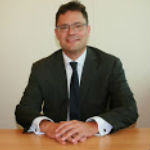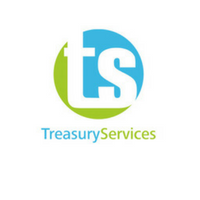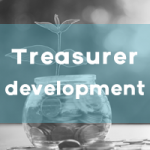Het Treasury statuut als beheersinstrument voor woningcorporaties
| 21-11-2017 | Roger Boxman |
Het onderstaande korte artikel gaat in op de eisen van het Treasury statuut. In een Treasury statuut wordt aangegeven wat het doel van de Treasuryfunctie is van de organisatie en in welke producten mag worden belegd en op welke wijze op hoofdlijnen gelden worden aangetrokken. Na het Vestia debacle, waarbij derivaten speculatief werden ingezet, heeft de overheid de wetgeving aangescherpt voor woningcorporaties. Een van de eisen is dat woningcorporaties verplicht een Treasury statuut moeten opstellen.
Treasury Commissie
De Woningwet 2015 verplicht om woningcorporaties een Treasury statuut op te stellen. In de sociale woningsector zijn de circa 2,4 miljoen sociale huurwoningen gefinancierd met € 88 miljard. Het Treasurystatuut geeft aan wat de lange termijn richtlijnen zijn met betrekking tot de treasuryfunctie en wordt mimimaal om de drie jaar geactualiseerd. Er wordt een Treasury commissie ingesteld als adviesorgaan van het bestuur. . Hier kunnen externe partijen van deel uit maken mits deze onafhankelijk zijn. De Treasurycommissie adviseert het bestuur gevraagd en ongevraagd over de uit te voeren transacties en overige treasuryvraagstukken. Het bestuur neemt deel aan de Treasurycommissie in de hoedanigheid van toehoorder.
Treasury jaarplan
Het treasuryjaarplan wordt afzonderlijk opgesteld en is een onderdeel van de (meerjaren)begroting. Dit plan bevat het beleid, de doelstellingen, het mandaat en de treasury taken voor het komende jaar, waarbij rekening wordt gehouden met het in het Treasury Statuut geformuleerde beleidskader en een risico beheersingsparagraaf. In het treasuryjaarplan worden o.a. de volgende zaken vastgelegd: liquiditeitsplanning, bestaande renterisico en de uit te voeren treasury activiteiten.
Risicomanagement
De belangrijkste risico’s die gemanaged worden zijn het beschikbaarheidsrisico, liquiditeitsrisico en renterisico en in mindere mate het tegenpartijrisico. Het Treasurystatuut bevat bepalingen over uitgezette gelden per tegenpartij met limieten. Veelal wordt voor het renterisico een maximum van 15% van de leningen aangegeven waarover een renteherziening worden toegepast.
Samenvatting
Bovenstaande is een summiere opsomming van alle eisen die aan een Treasury statuut bij een woningcorporatie gesteld worden. De wetgever heeft een model Treasurystatuut dat tientallen pagina’s beslaat. Belangrijk is te beseffen dat er beperkingen aan de Treasuryfunctie worden gesteld en dat er formeel een mandaat is vastgesteld waarbinnen de Treasurer dient te opereren en zich te verantwoorden.
Senior Advisor Internal Control


 The DACT (Dutch association of Corporate Treasurers) will be holding their annual Treasury Fair in Noordwijk at the Hotel van Orange on 23rd and 24th November 2017 – the most important annual treasury event in the Netherlands. Discover treasury best practices, learn about the latest trends and exchange experiences. It will contain 9 practical workshops spread out throughout the day on topics including, among others, trade finance, supply chain finance, liquidity forecasting, cyber security and the Blockchain. There are more than 50 exhibitors present at the Trade Fair including Treasury Services- a partner of treasuryXL.
The DACT (Dutch association of Corporate Treasurers) will be holding their annual Treasury Fair in Noordwijk at the Hotel van Orange on 23rd and 24th November 2017 – the most important annual treasury event in the Netherlands. Discover treasury best practices, learn about the latest trends and exchange experiences. It will contain 9 practical workshops spread out throughout the day on topics including, among others, trade finance, supply chain finance, liquidity forecasting, cyber security and the Blockchain. There are more than 50 exhibitors present at the Trade Fair including Treasury Services- a partner of treasuryXL. The DACT (Dutch association of Corporate Treasurers) will be holding their annual Treasury Fair in Noordwijk at the Hotel van Orange on 23rd and 24th November 2017 – the most important annual treasury event in the Netherlands. Discover treasury best practices, learn about the latest trends and exchange experiences. It will contain 9 practical workshops throughout the day on topics including, trade finance, supply chain finance, liquidity forecasting, cyber security and the Blockchain. There are more than 50 exhibitors present at the Trade Fair including Cashforce – a partner of treasuryXL, who are also presenting a Workshop.
The DACT (Dutch association of Corporate Treasurers) will be holding their annual Treasury Fair in Noordwijk at the Hotel van Orange on 23rd and 24th November 2017 – the most important annual treasury event in the Netherlands. Discover treasury best practices, learn about the latest trends and exchange experiences. It will contain 9 practical workshops throughout the day on topics including, trade finance, supply chain finance, liquidity forecasting, cyber security and the Blockchain. There are more than 50 exhibitors present at the Trade Fair including Cashforce – a partner of treasuryXL, who are also presenting a Workshop. Both from student perspective as well as from educators we receive signals they want to invest in training and education. Some articles have been written about what is out there (read
Both from student perspective as well as from educators we receive signals they want to invest in training and education. Some articles have been written about what is out there (read  The DACT (Dutch association of Corporate Treasurers) will be holding their annual Treasury Fair in Noordwijk at the Hotel van Orange on 23rd and 24th November 2017 – the most important annual treasury event in the Netherlands. Discover treasury best practices, learn about the latest trends and exchange experiences. It will contain 9 practical workshops spread out throughout the day on topics including, among others, trade finance, supply chain finance, liquidity forecasting, cyber security and the Blockchain. There are more than 50 exhibitors present at the Trade Fair including Tipco Treasury & Technology GmbH- a partner of treasuryXL.
The DACT (Dutch association of Corporate Treasurers) will be holding their annual Treasury Fair in Noordwijk at the Hotel van Orange on 23rd and 24th November 2017 – the most important annual treasury event in the Netherlands. Discover treasury best practices, learn about the latest trends and exchange experiences. It will contain 9 practical workshops spread out throughout the day on topics including, among others, trade finance, supply chain finance, liquidity forecasting, cyber security and the Blockchain. There are more than 50 exhibitors present at the Trade Fair including Tipco Treasury & Technology GmbH- a partner of treasuryXL.

 My last blog was about IBM, triggered by a Juniper Research putting the company as the number one in the blockchain technology competition. One of the comments on this blog was that it looked like an IBM press release. But that is far beyond what is meant. I just looked at what the tech company was doing in the blockchain arena and why it could be adopted as the main blockchain model when blockchain adoption could become mainstream. In a previous blog I already talked about Microsoft’s CoCo platform, the number two in the Juniper Research asking myself if that could become a game changer (see my Blog: Microsoft CoCo Framework: blockchain game changer, August 29, 2017). Today I will go into some more detail in the blockchain activities of Accenture, number three according to the Juniper survey.
My last blog was about IBM, triggered by a Juniper Research putting the company as the number one in the blockchain technology competition. One of the comments on this blog was that it looked like an IBM press release. But that is far beyond what is meant. I just looked at what the tech company was doing in the blockchain arena and why it could be adopted as the main blockchain model when blockchain adoption could become mainstream. In a previous blog I already talked about Microsoft’s CoCo platform, the number two in the Juniper Research asking myself if that could become a game changer (see my Blog: Microsoft CoCo Framework: blockchain game changer, August 29, 2017). Today I will go into some more detail in the blockchain activities of Accenture, number three according to the Juniper survey.

 Last week I received a call from one of my clients. Over the last years, I found several members for their team. Given the transition they are in, they were looking for benchmark information to shape their treasury team and make it future proof. This has kept me thinking and I started gathering information in order to give a proper answer. As to be expected, there is no standard template resulting in an easy answer. Even for more evolved job types like sales or accounting this is a hard question, corporate treasury is too young and small for sound statistics.
Last week I received a call from one of my clients. Over the last years, I found several members for their team. Given the transition they are in, they were looking for benchmark information to shape their treasury team and make it future proof. This has kept me thinking and I started gathering information in order to give a proper answer. As to be expected, there is no standard template resulting in an easy answer. Even for more evolved job types like sales or accounting this is a hard question, corporate treasury is too young and small for sound statistics.
 Na de vorming van de euro is het toezicht op financiële instellingen en markten geïnternationaliseerd. Hierbij is het logisch om een ‘level playing field’ binnen de eurozone te realiseren om reguleringsarbitrage te voorkomen.
Na de vorming van de euro is het toezicht op financiële instellingen en markten geïnternationaliseerd. Hierbij is het logisch om een ‘level playing field’ binnen de eurozone te realiseren om reguleringsarbitrage te voorkomen.
 Ontvang via treasuryXL korting op deze e-learning en/of de
Ontvang via treasuryXL korting op deze e-learning en/of de 
